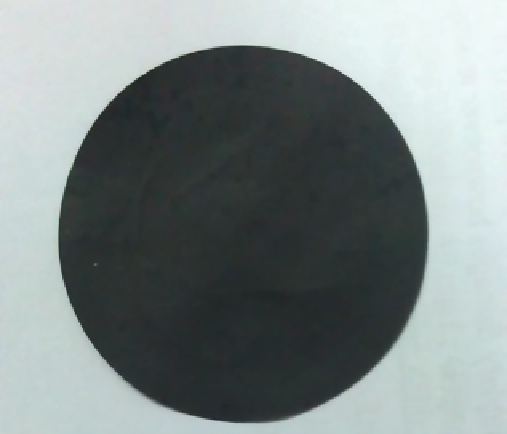Environmental Engineering Reference
In-Depth Information
(b)
(a)
fiGure 8.4
(a) Photograph of buckypapers and (b) scanning electron microscopy (SEm) image of the surface of buckypapers.
8.5.2
buckypapers
Buckypapers consist solely of packed CNT bundles entangled with one another, held together, and arranged as a planar film
through van der Waals forces, as shown in Figure 8.4. Normally, self-supporting CNT-based membranes are synthesized by
dispersing CNTs in a suitable solvent such as ethanol [106], propan-2-ol [107], and dimethylformamide [108], followed by
vacuum filtration using a porous membrane filter. In some cases, surfactants such as Triton x-100 [109] or SDS [110] are also
used as the dispersion medium. During the drying process, the solvent evaporates and the capillary forces of the solvent bring
CNTs together to a closely knit structure [111]. Buckypapers form a highly porous network structure, whereas CNTs are ran-
domly oriented, although they are predominantly arranged in a plane parallel to the surface of the buckypapers [112]. The
porous characteristics of buckypapers can be controlled by the length distribution of CNTs [113, 114].
The application of buckypapers in water treatment has gained interest in the past few years. Dumee et al. [99] experimentally dis-
covered the potential application of buckypapers in mD. mD is a thermally driven process in which only vapor molecules are in
contact with membranes and transported across membranes through membrane pores. mD is anticipated to be an alternative to reverse
osmosis and desalination. Essentially, buckypapers meet the requirement of serving as membranes for mD. Given their hydrophobic
nature, buckypapers prepared from pristine CNTs exhibit high contact angle with water droplets, which indicates their weak surface
interaction with water, thereby preventing leakage of the aqueous solution onto the membrane surface. The presence of CNTs in
buckypapers also enables better thermal stability that restricts the thermal degradation of membranes at high temperatures. This obser-
vation is critical because mD preferably operates at high temperatures because the vapor pressure exponentially increases with
increased temperature according to Antoine's equation [115]. moreover, buckypapers can reduce pore clogging caused by water con-
densation during vapor permeation. CNTs have a high thermal conductivity that enables a relatively uniform temperature distribution
in buckypapers, which reduces the possibilities of liquid condensation in membrane pores caused by a temperature gradient [101]. In
addition, the high porosity of buckypapers provides an alternative pathway for efficient vapor transport. Dumee et al. [99] showed the
advantages of buckypapers in mD in terms of the membranes demonstrating 99% salt rejection and 12 kg/m
2
·h flux rate. The
outcome is comparable with that using conventional mD membranes, such as polytetrafluoroethylene (PTFE). However, buck-
ypapers endure a flux decline with prolonged operating time as a result of crack formation caused by mechanical aging. Several
approaches have been proposed to solve this problem, including the preparation of buckypapers from alkoxysilane-functionalized
CNTs [97] or coating of thin PTFE layers on buckypapers [116].
Apart from mD, the porous structure of buckypapers makes them appropriate for filtration-related applications. In fact, instead
of buckypapers, a number of researchers have successfully used the concept of bundle CNTs in filtering processes to remove
nanoparticles, dye molecules, and viruses from water [117, 118]. In line with these results, Roy et al. [90] produced buckypapers
with 1.3 g/cm
3
density by a vacuum filtration technique. The resultant buckypapers can intercept and remove nanoparticles with
average sizes of about 14-15 nm, with a flux of approximately 1000 l/h·m
2
·bar. Despite the controlled pore size, the potential
demonstrated by the buckypapers for filtering nanoparticles can be attributed to the high tortuous paths of buckypapers.


